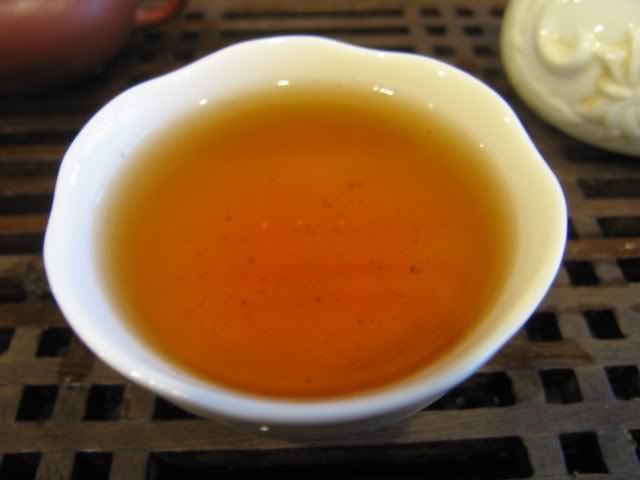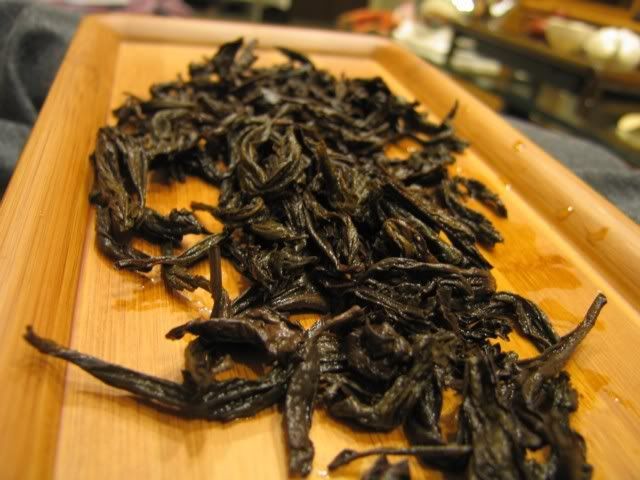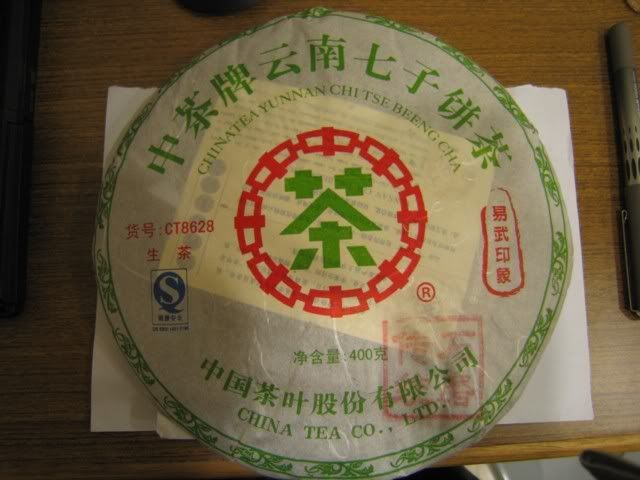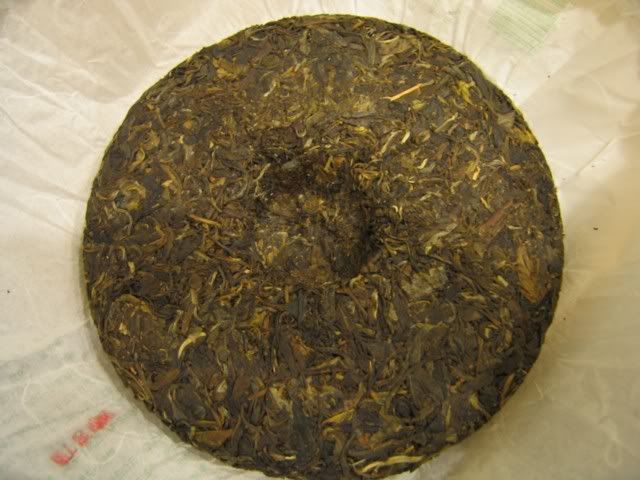I had some Wuyi shuixian today that I got from Beijing. This is from a guy who claims to have opened the first civilian (as opposed to state-owned) tea factory in Wuyi mountains. He recently opened a store in Beijing, and I got this from him since…. well, since I walked by his store when he was standing out front, and I already knew him and pretty much were obligated to go in and drink something.
Shuixians are good for two things. The first is that it’s quite easy to handle – as long as it’s a properly made and stored shuixian, it can hardly go wrong. You can overbrew it and still get something quite decent out of it. The same is true for most Wuyi teas that are of the roasted variety — really light Wuyi can be quite nasty if overbrewed, at least in my experience anyway. The second good thing about shuixians is that it’s usually really cheap.
The price differential comes from somewhere, obviously. Oftentimes the qi of shuixian is lacking, and the robustness and depth of flavour also don’t necessarily compare with a top notch dahongpao or some such, but as an everyday drink, it beats almost anything. I’ll be happy to drink shuixian till the day I die without too much complaining…
The tea today is somewhat aged. Precisely how long, I don’t know, and I don’t know if the guy who sold it to me knows. I think he muttered something around 10 years. I’m not sure if it’s that old, but it’s probably been a few years. Wuyi teas in general develop a rather distinctive taste after a few years of aging — a taste that I don’t really know how to describe, but is unmistakable once you’ve tried it. This tea actually isn’t too heavily fired

But there’s still a bit of a charcoal roasted taste to it. It is generally sweet, mellow, quite warm, and quite relaxing. This is why I say it’s a good everyday tea – it’s unoffensive and very pleasant. Can’t say the same of things like younger puerhs, light Taiwan oolongs, or greens…
The leaves didn’t really unfurl despite repeated and long brewings.

Somebody told me at one point that leaves that don’t unfurl were rolled by hand, while machine rolled teas tend to unfurl easily. I would think that repeated roastings might also have done something to it. I’m not sure, actually, if any of these are true. Even when I tried to pry the leaves open though

You can see the wrinkles.
I’m wondering why I didn’t buy more of this. Then again, I remembered why as the third typhoon in two weeks raged outside — these things don’t behave when it’s moist outside. They can get sour, and I don’t like sour tea.





I just want to say that I still find your blog and writing extremely relevant. Thanks!